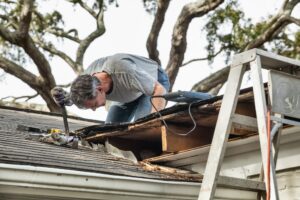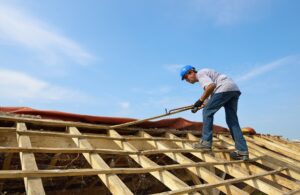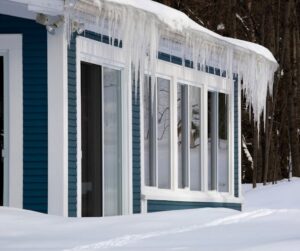One of the many important layers that make up your residential roofing system is the underlayment. Roofing underlayment is installed on top of your roof decking. It acts as a barrier material that provides a secondary layer of protection against leaks. The quality of your roofing underlayment will determine how well your roof decking can stand up against the elements should any shingles be blown off or damaged in a storm.
The better you understand the types of roofing underlayment available on the market today, the more prepared you will be to select the right underlayment material when upgrading your roof. Read on to learn about three different types of underlayment material.
1. Felt Underlayment
A felt underlayment also referred to as tar paper or felt paper, is one of the oldest types of roofing underlayment products still in use today.
Manufacturers will soak an organic mat or specialized paper product with asphalt when creating a felt underlayment. The asphalt soak lends structure to the underlayment, and it also helps to make the organic mat or paper more resistant to moisture penetration.
Felt underlayment can also help create a smooth surface that will improve the aesthetic of your asphalt shingle roof.
Felt underlayment tends to be one of the most affordable options for homeowners. Your roofing contractor may suggest that you install multiple layers of felt underlayment during a roof replacement to maximize the waterproofing ability of this material.
2. Self-Adhered Underlayment
The design of a residential roof can influence the type of underlayment material that will offer the most protection. Self-adhered underlayment products work well on roofs that feature multiple leak-prone design features. Some common leak-prone areas on a residential roof include eaves, valleys, and skylights.
A self-adhered underlayment is a mixture of asphalt and rubber polymers. The backside of the underlayment is coated with a sticky material, which allows the product to adhere directly to the roof decking.
Full-contact adhesion between the decking and the underlayment helps to enhance the waterproofing effects of the self-adhered underlayment.
Roofing contractors will commonly advise residential clients to install a self-adhered underlayment in geographic regions that see heavy storms. The unique seal created between the self-adhered underlayment and the roof decking can prevent heavy rain or snow from damaging your roofing system over time.
3. Synthetic Underlayment
Advancements in technology have given rise to synthetic roofing underlayment. Each manufacturer uses a unique blend of materials to create their synthetic underlayment products, but all manufacturers employ the same weaving technique. Multiple layers of polymers are woven together to create a strong and lightweight underlayment.
Each unique blend of polymers can be specially formulated to provide synthetic underlayment with desirable traits. Some roofing contractors utilize a synthetic underlayment that is specially formulated to extend exposure time without damage. This allows more time to complete any roof replacement project without compromising the quality of the underlayment, as contractors don’t have to cover the underlayment with the rest of the roof immediately.
Other roofing contractors prefer a synthetic underlayment that is formulated for walkability. These thicker types of synthetic underlayment make it easier for contractors to complete the installation process without worrying about causing damage to the underlayment as they walk on the roof.
If you are looking for a durable, lightweight, and mold-resistant underlayment, talk to your roofing contractor about using a synthetic product for your roof replacement.
A roof underlayment is an essential factor in determining the integrity and stability of a residential roofing system over time.
Contact Precise Roofing & Contracting to learn more about the roofing underlayment that will enhance the quality of your home.





